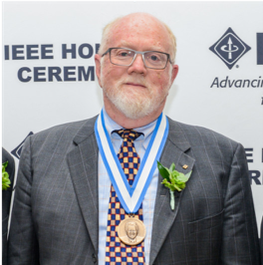A Technical Confluence Of UWB Radar and Communications In A Congested RF Environment
Dr. Mark E. Davis – Senior Independent Consultant, USA

Mark E Davis has over 50 years’ experience in Radar technology and systems development. He has held senior management positions in the Defense Advanced Research Projects Agency (DARPA), Air Force Research Laboratory, and General Electric Aerospace. At DARPA, he was the program manager on both the foliage penetration (FOPEN) radar advanced development program and the GeoSAR foliage penetration mapping radar. Dr Davis wrote the text: ”Foliage Penetration Radar – Detection and Characterization of Objects Under Trees”, published by Scitech Raleigh NC in March 2011. A new text on Ultra-Wide Band Surveillance Radar has been published by IET in January 2021, which serves as the reference text for this tutorial.
His education includes a PhD in Physics from The Ohio State University, and Bachelor and Masters Degrees in Electrical Engineering from Syracuse University. He is a Life Fellow of both the IEEE and Military Sensing Symposia. And, he has held positions as IEEE Aerospace Electronics Systems Society President Elect, past member of the AESS Board of Governors, VP Conferences, and past-Chair the Radar Systems Panel. He is the 2011 recipient of the AESS Warren D White Award for Excellence in Radar Engineering, and the 2018 IEEE Dennis J. Pickard Medal for Radar Technologies and Applications.
Keynote talk description
Modern Ultra-Wide Band (UWB) RF systems require bandwidth to achieve channel use for communication, and fine spatial and Doppler resolution for radar. These capabilities require extensive testing to meet significant standards for both personal communications and radar sensing systems.
There has been a significant change since 2005 in the spectrum compliance process. This was based on major advances in the communications and radar system technology, as well as shifting from analog to digital transmitters in both RF modes.
The recent development in cognitive control of both radar and communications provides an opportunity for reducing the possibility of spectrum interference. The main elements of this technology is the development of orthogonal waveforms that provide a moderate prevention of co-channel interference, the ability to sense the spectrum around a transmitter to determine regions of the spectrum, not being used (white spaces) and the recent development of machine learning that can greatly enable the performance for radar resolution and communications lower bit error rates.
The Plenary talk will provide a brief summary of the issues, and posit development plans for future radar research and development.
